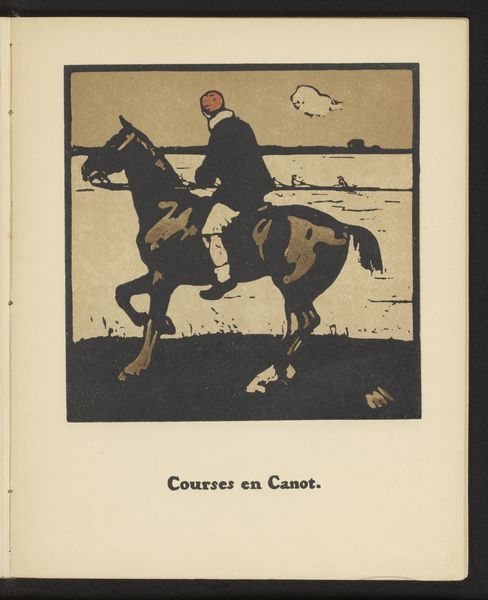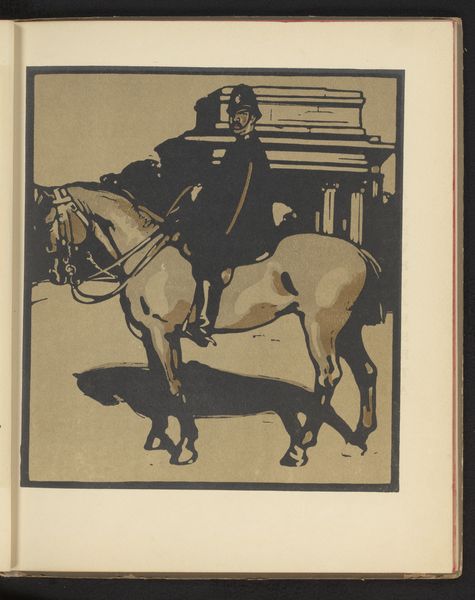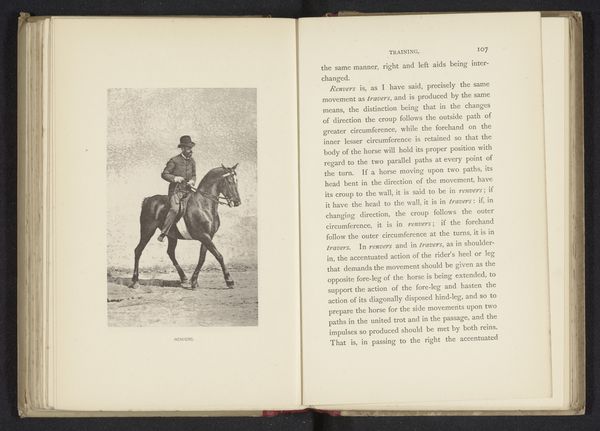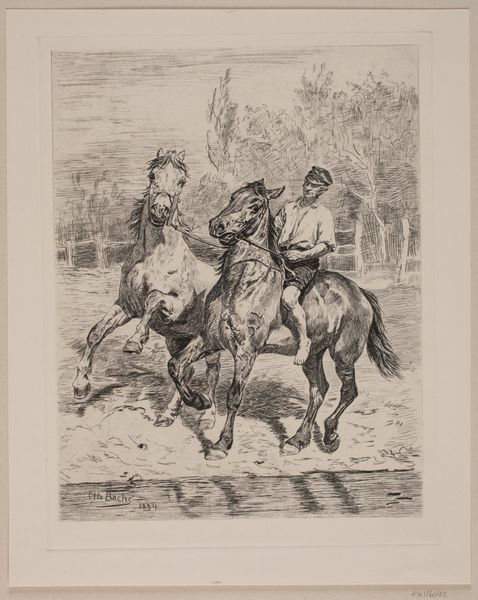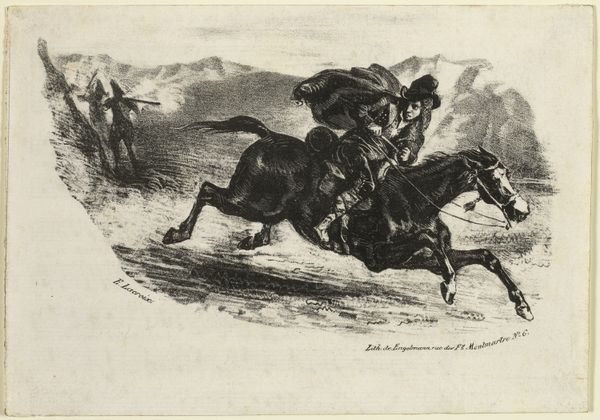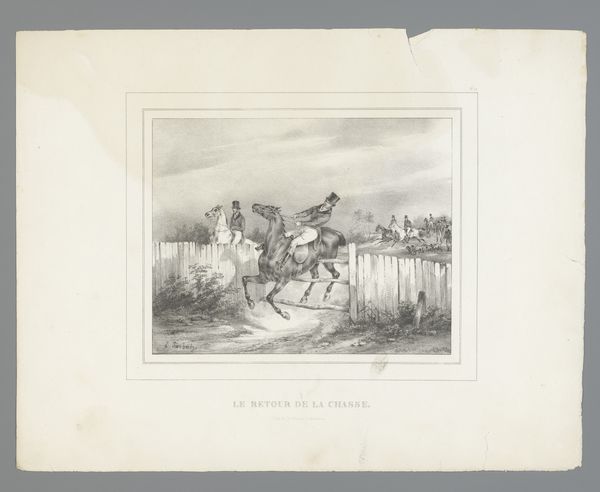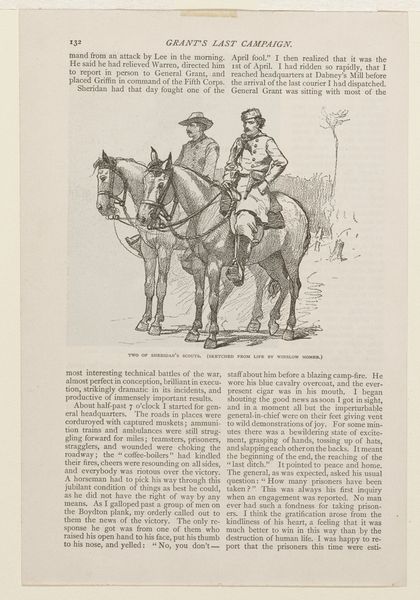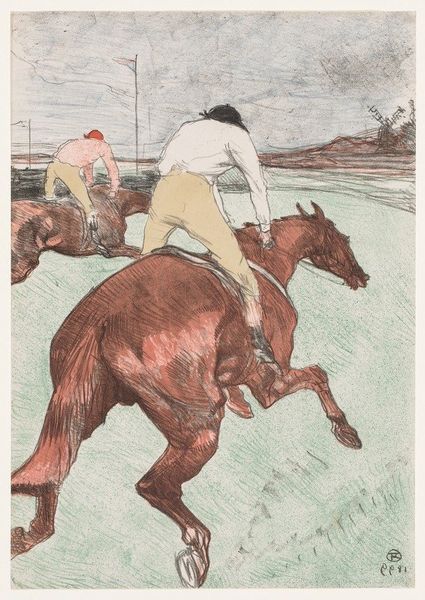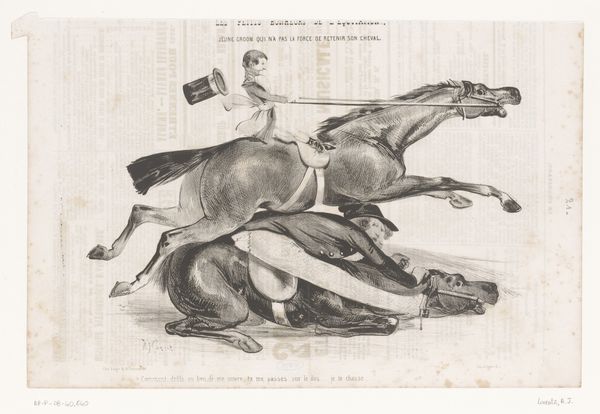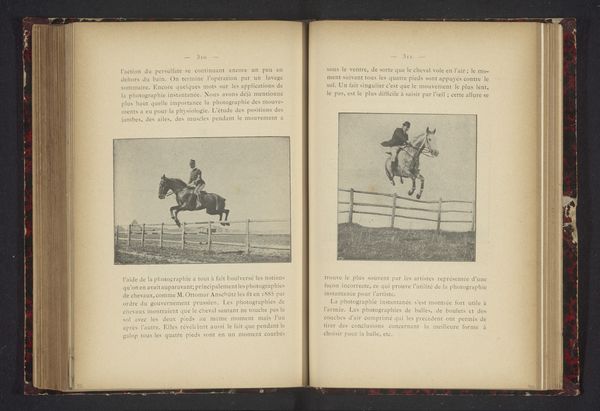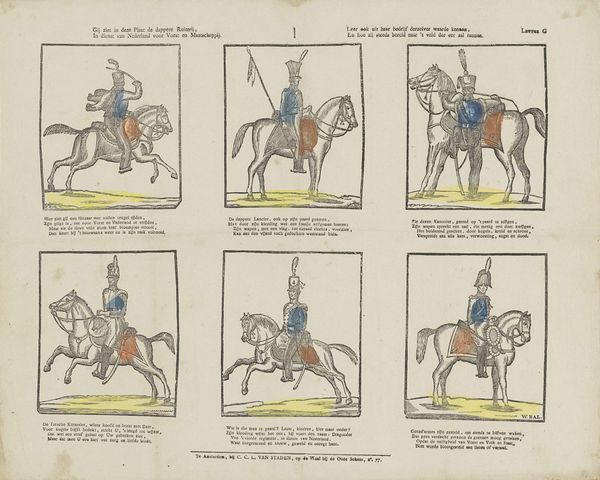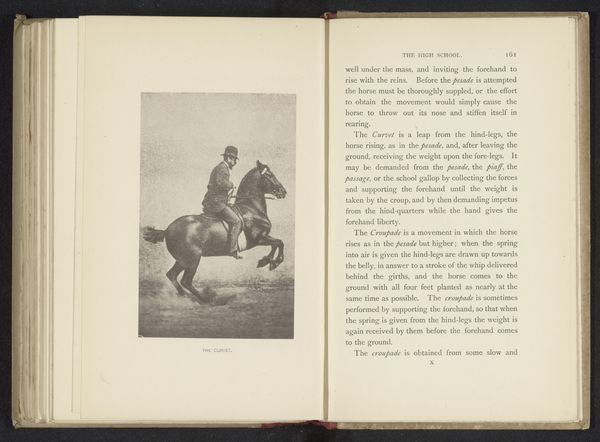
Dimensions: height 312 mm, width 250 mm
Copyright: Rijks Museum: Open Domain
William Nicholson’s woodcut, "Drie jockeys op de renbaan", captures the intensity of a horse race through bold, simplified forms. The jockey atop his steed embodies triumph and mastery over nature. Consider the horse, a symbol laden with cultural significance. Across millennia, from the steeds of Greek gods to the warhorses of medieval knights, it represents power, virility, and untamed energy. Here, the horse is not merely a means of transport, it's a vessel of ambition. We can think of the Winged Victory of Samothrace, or even the horses of Saint Mark’s Basilica—their powerful strides resonating through art history. The race itself becomes a metaphor for human striving. The jockey's focused gaze and the horse's straining muscles evoke a deep-seated desire for victory. It's a primal urge, echoing in the collective memory, the human drive to overcome challenges, an impulse to rise above the masses. Nicholson captures the electric tension, the collective breath held in anticipation, transforming a sporting event into a profound meditation on human aspiration.
Comments
No comments
Be the first to comment and join the conversation on the ultimate creative platform.

